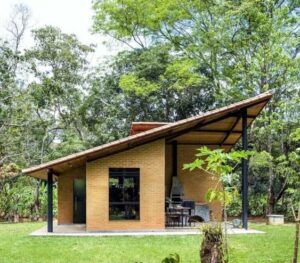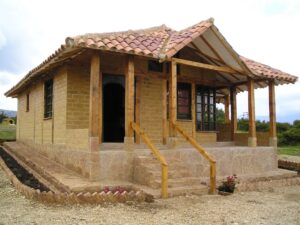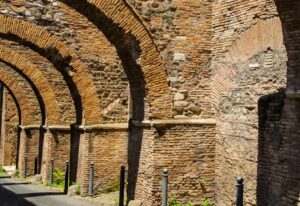Adobe construction has been used by humanity for thousands of years. With a history spanning over 6,000 years,this building technique has spread across the world due to its ease of production, simple application, and remarkable versatility. In Portugal, adobe buildings can still be found throughout the country, proving the durability and efficiency of this ancient method.
Although industrialized materials gradually replaced adobe from the 19th century onwards, its value is now being
rediscovered, especially for its ecological and sustainable advantages.
The Key Advantages of Adobe
✅ Eco-Friendly and Sustainable
Adobe is one of the most environmentally friendly building materials available. Made solely from earth, water, and sometimes natural fibers, its production requires minimal energy and does not generate greenhouse gas emissions.
Additionally, it is reusable—if an adobe brick is not fired, it can be crushed, moistened, and reshaped, preventing waste and promoting a sustainable construction cycle.
✅ Abundant and Locally Sourced
Earth is a widely available natural resource, meaning adobe can be produced locally. This reduces costs and the environmental impact associated with transporting building materials.
✅ Natural Thermal Insulation
Adobe has high thermal inertia, making it an excellent regulator of indoor temperatures. In hot, dry regions where days are scorching and nights are cold, adobe walls help maintain a balanced and comfortable indoor climate. This feature significantly reduces energy consumption by decreasing reliance on air conditioning or heating systems.
✅ Humidity Regulation
Even in humid climates, adobe offers advantages. It can absorb up to 30 times more moisture than fired brick or concrete block walls, helping to create a healthier and more comfortable indoor environment.
✅ Low Environmental Impact
Adobe construction reduces the negative environmental impacts of the building industry due to several factors:
Local and small-scale production;
Low energy consumption for manufacturing and transportation;
Reduction of construction and demolition waste;
High recycling potential.
How Are Adobe Bricks Made?
Adobe bricks have a rectangular parallelepiped shape, typically with a length twice the width. They are hand-molded and sun-dried, acquiring enough strength to build walls, arches, domes, and vaults.
For specific projects, such as curved walls or angles other than 90º, adobe bricks can be made in custom shapes. Their composition can be adjusted with sand or a mix of different soil types to ensure the best structural performance.
The drying process is crucial to prevent cracks and ensure high-quality adobe. Drying time varies according to climate, but it is essential to avoid excessively rapid drying in the first few days to prevent fissures.
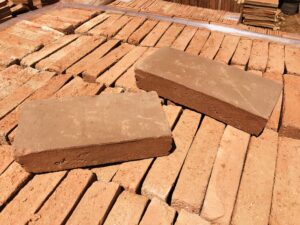
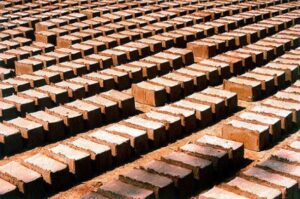
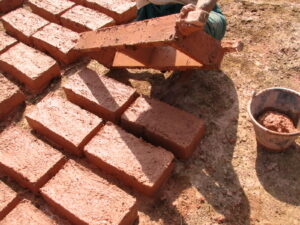

Care and Protection of Adobe Constructions
Although a durable material, adobe requires some protective measures to ensure its longevity, particularly against moisture and erosion:
✔️ Drainage systems around the building;
✔️ A foundation made of materials that prevent rising damp;
✔️ Earth-based plasters, stabilized with lime for better rain resistance;
✔️ Roof overhangs to protect walls from direct exposure to rain;
✔️ Paved surroundings to reduce prolonged contact with moisture.
Conclusion
Adobe represents a smart return to traditional building techniques, combining heritage with sustainability. It is an accessible, efficient, and eco-friendly material that enables healthier, more comfortable, and longer-lasting constructions. In a world where the construction industry needs to reduce its environmental footprint, adobe stands out as a naturally effective and sustainable solution.
